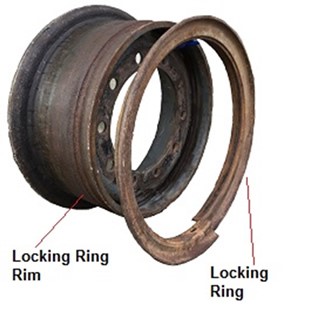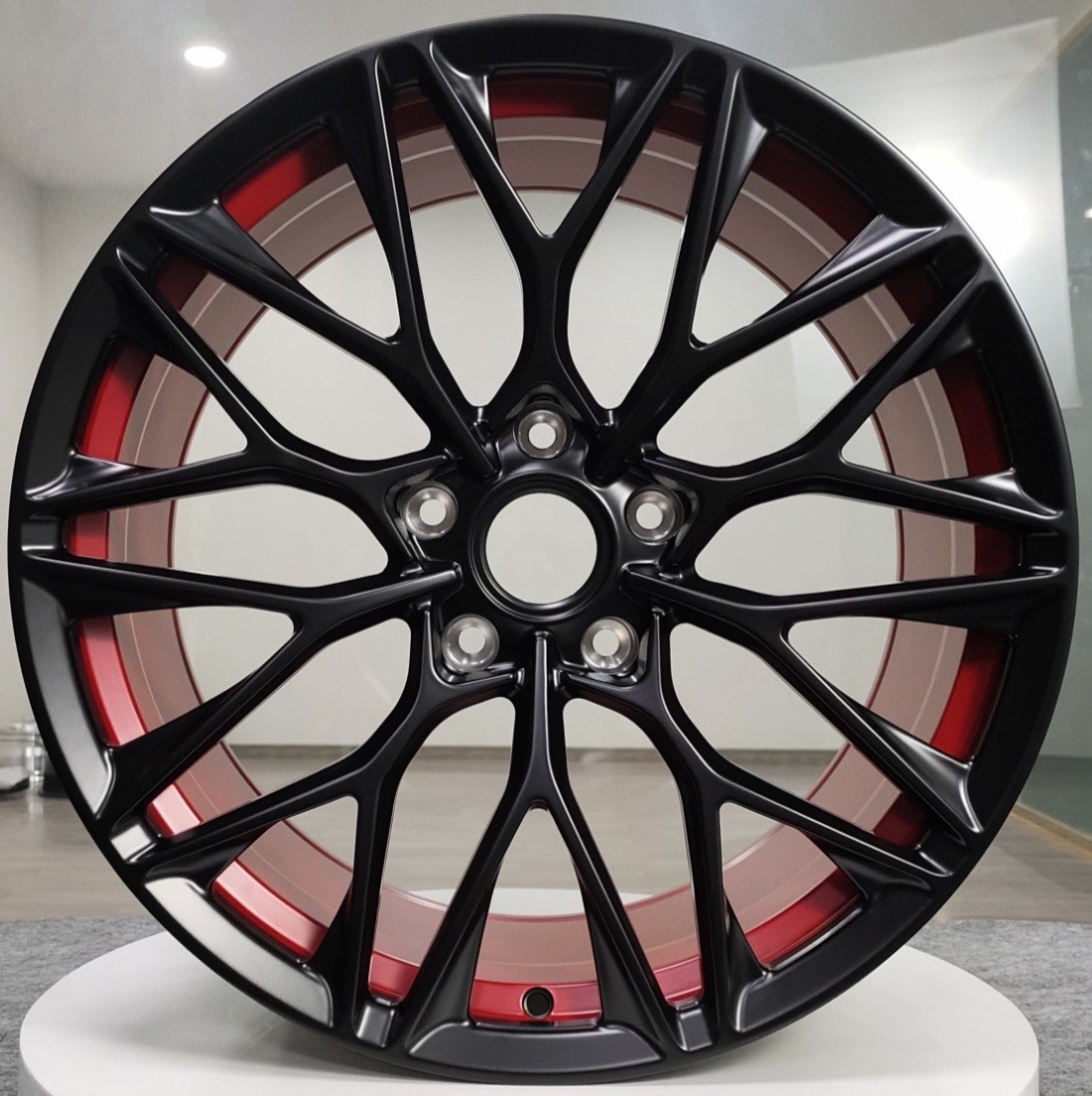Split rims have been on the scene for quite a long time but aren’t used commonly now. This is because split rims are prone to bursting under pressure, posing lethal threats to anyone nearby. Solid rims are way more common in modern vehicles.
So, what is the difference between split rims vs. solid rims? Split rims are composed of multiple pieces bolted together. They are easier to disassemble when you work with inflexible tires. Solid rims are made in a one-piece configuration. These rims are much safer than split rims.
In this guide, we will discuss everything you need to know about these two types of rims.
Feature Comparison: Split Rims vs. Solid Rims
The following table shows the basic differences between split rims and solid rims. Check it out.
| Features | Split Rims | Solid Rims |
| Image |  |  |
| Material | Mostly steel | Aluminum alloys |
| Tire Pressure Requirement | Tire pressure always needs to be ideal | Can be run with overinflated or deflated tires |
| Puncture Repair | Fixing punctures on tubes are easier | Heavy equipment is necessary for repairs |
| Overheating | Higher chance of overheating | Less overheating |
| Safety | Split rims have more hazards | Solid rims are much safer |
| Use Cases | Large vehicles, such as lorries, mining trucks, etc. | Cars or light vehicles |
What Are Split Rims and How Are They Made?
As you might already see in the above table, a split rim is made of two or three components. They are known as two-piece or three-piece wheels, accordingly. Sometimes, they are also known as multi-piece wheels.
In these rims, the core is divided into two parts. And each part is bolted with the other to construct the wheel. The whole thing is then fitted to the wheel hub using lug nuts.
A locking ring sits on the outer lip of split rims. It is the responsibility of the locking ring to keep the tires locked in place. Split rims are commonly made of steel in the forging process.
What Are Solid Rims and How Are They Made?
Solid rims are also known as single-piece rims. As the name suggests, the whole rim is a single solid component made from steel, aluminum alloys, carbon fiber, etc. Besides forging, pressure casting or flow forming process is used to make solid rims.
The rim directly sits on the wheel hub, and it is tightened with lug nuts. As these rims have a single-piece configuration, they are much safer compared to split rims.
Detailed Comparison: Split Rims vs. Solid Rims
Other than just the appearance or making process, these two rims are quite different in terms of durability, safety, and maintenance. Here is a detailed comparison between them.
Installation and Repair
Check the challenges you face while installing or repairing these rims.
- Split Rims
The installation process of split rims is a bit more complex than installing solid rims. Plus, the process can vary slightly depending on the rim. Usually, the rim components are bolted together and then the rims is installed on the wheel hub.
While repairing the rim, the tire should be deflated before taking the rim off. Otherwise, there is a chance of the rim components exploding.
- Solid Rims
These rims can be installed or removed pretty easily. You only need to tighten or loosen the lug nuts to install or remove these rims. But taking off the tire from solid rims is more complex than split rims.
So, if the tire needs to be removed or replaced in the middle of nowhere, you will be in great trouble.
Strength and Durability
These two rims deliver different performances in terms of durability.
- Split Rims
As these rims are mostly used in heavy vehicles, the tires are also much thicker than usual. These heavy vehicles are used on rough terrains, such as mines. So, split rims need to withstand a good beating. Due to their steel construction, the rims don’t get bent or scratched so easily.
Even if they do, the outer split ring takes most of the damage. And that can be repaired easily without changing the whole rim. Learn more about Split Rim vs. Split Ring.
- Solid Rims
These rims are mostly used on even surfaces. But in case you go off-road, these rims can be seriously damaged. One reason is their aluminum alloy build, which is less strong than the steel build of split rims.
And the scope of distributing an impact is lower on solid rims. So, these wheels might get bent or broken pretty easily.
Safety Facts
Check how these rims differ in terms of safety.
- Split Rims
These rims are also known as widow-makers because of the risks associated with these rims. The rim can dislodge under pressure because it is made of multiple components. If this happens at high speed, anyone in the surroundings can be severely injured or dead.
An explosion can happen even when inflating tires with these rims. If you overinflate the tire on a split rim, the locking system can fail and cause a massive explosion. So, only highly trained professionals should perform any maintenance tasks on split rims.
- Solid Rims
As there is no loose component on these rims, they are much safer to work with. There will be no chance of the rim exploding on your face while removing the rim or inflating the tire.
Tire Pressure
Maintaining the tire pressure can be different on these wheels.
- Split Rims
Though the components of split rims are bolted together, tire pressure plays a vital role in keeping the components in place. When the tire is properly inflated, the locking ring is under constant pressure.
If the tire is deflated for some reason, the pressure gets reduced, and the locking ring can become loose. It can cause devastating results, especially when the vehicle is on the move.
- Solid Rims
As there is no moving component, partially or entirely deflated tires don’t affect solid rims that much. So, if your tire gets deflated midway, you can still drive to a garage with solid rims.
Tire Inflation
Inflating the tires is also different on these two rims.
- Split Rims
If you inflate tires without jacking the wheel, the pressure won’t rise uniformly. So, you must jack the wheel while inflating the tire, which can be troublesome.
- Solid Rims
With solid rims, you can inflate tires on the ground. As the rim has no moving parts, the pressure will rise evenly throughout the rim.
Can You Overcome the Challenges with Split Rims?
If you have an older vehicle with split rims, you might want to switch to regular solid rims for several reasons. You can do that with a few tools and matching solid rims. Learn more on How to Convert Split Rims to Regular Rims.
Conclusion
Split rims are now a thing of the past for most vehicles. Though these rims are a lot tougher, they have multiple inconveniences. The biggest disadvantage of split rims is the risk of explosion.
If split rims aren’t handled correctly, they can cause severe damage. Solid rims are safer than split rims, so anyone can handle these rims without much experience. So, you should carefully choose between split rims and solid rims for the vehicle you use daily.

